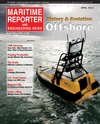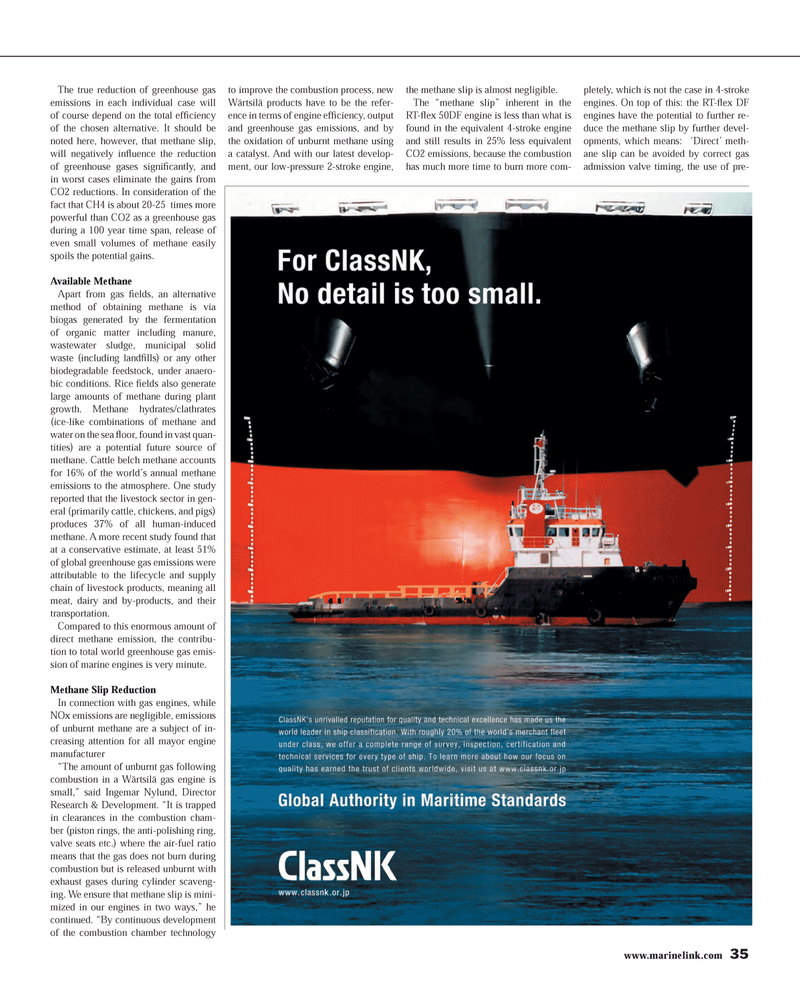
Page 35: of Maritime Reporter Magazine (April 2014)
Offshore Edition
Read this page in Pdf, Flash or Html5 edition of April 2014 Maritime Reporter Magazine
www.marinelink.com 35The true reduction of greenhouse gas emissions in each individual case will of course depend on the total efÞ ciency of the chosen alternative. It should be noted here, however, that methane slip, will negatively inß uence the reduction of greenhouse gases signiÞ cantly, and in worst cases eliminate the gains from CO2 reductions. In consideration of the fact that CH4 is about 20-25 times more powerful than CO2 as a greenhouse gas during a 100 year time span, release of even small volumes of methane easily spoils the potential gains.Available Methane Apart from gas Þ elds, an alternative method of obtaining methane is via biogas generated by the fermentation of organic matter including manure, wastewater sludge, municipal solid waste (including landÞ lls) or any other biodegradable feedstock, under anaero-bic conditions. Rice Þ elds also generate large amounts of methane during plant growth. Methane hydrates/clathrates (ice-like combinations of methane and water on the sea ß oor, found in vast quan- tities) are a potential future source of methane. Cattle belch methane accounts for 16% of the world?s annual methane emissions to the atmosphere. One study reported that the livestock sector in gen-eral (primarily cattle, chickens, and pigs) produces 37% of all human-induced methane. A more recent study found that at a conservative estimate, at least 51% of global greenhouse gas emissions were attributable to the lifecycle and supply chain of livestock products, meaning all meat, dairy and by-products, and their transportation. Compared to this enormous amount of direct methane emission, the contribu-tion to total world greenhouse gas emis-sion of marine engines is very minute.Methane Slip ReductionIn connection with gas engines, while NOx emissions are negligible, emissions of unburnt methane are a subject of in-creasing attention for all mayor engine manufacturer?The amount of unburnt gas following combustion in a Wärtsilä gas engine is small,? said Ingemar Nylund, Director Research & Development. ?It is trapped in clearances in the combustion cham-ber (piston rings, the anti-polishing ring, valve seats etc.) where the air-fuel ratio means that the gas does not burn during combustion but is released unburnt with exhaust gases during cylinder scaveng-ing. We ensure that methane slip is mini- mized in our engines in two ways,? he continued. ?By continuous development of the combustion chamber technology to improve the combustion process, new Wärtsilä products have to be the refer- ence in terms of engine efÞ ciency, output and greenhouse gas emissions, and by the oxidation of unburnt methane using a catalyst. And with our latest develop- ment, our low-pressure 2-stroke engine, the methane slip is almost negligible. The ?methane slip? inherent in the RT- ß ex 50DF engine is less than what is found in the equivalent 4-stroke engine and still results in 25% less equivalent CO2 emissions, because the combustion has much more time to burn more com-pletely, which is not the case in 4-stroke engines. On top of this: the RT- ß ex DF engines have the potential to further re-duce the methane slip by further devel-opments, which means: ?Direct? meth- ane slip can be avoided by correct gas admission valve timing, the use of pre-MR #4 (34-41).indd 35MR #4 (34-41).indd 354/4/2014 11:07:33 AM4/4/2014 11:07:33 AM

 34
34

 36
36
